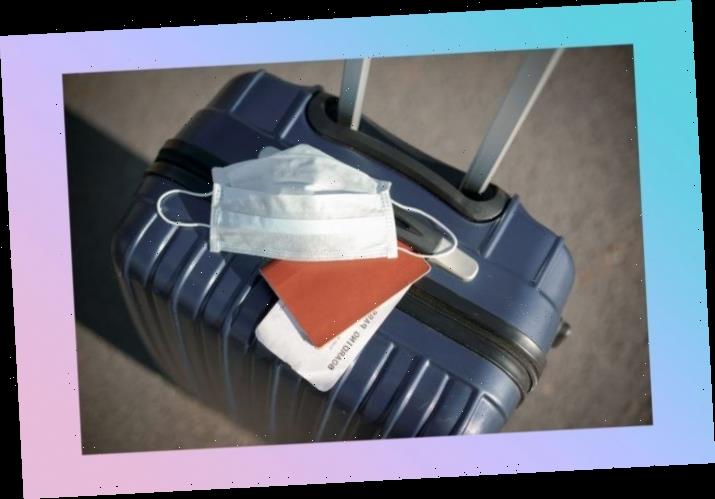Dr. Alok Patel is In The Know’s wellness contributor. Follow him on Twitter and Instagram for more.
You skipped the 4th of July picnics, Memorial Day boating trips, Labor Day rooftop parties and all three of the Thanksgiving potlucks you were invited to. You’ve been responsible.
“But, this is different,” you say to yourself.
This is December, a holiday-dense month that is a beacon of bliss in American culture. This is the time of Hanukkah, Christmas, Kwanzaa, Winter Solstice, Boxing Day, National Ugly Christmas Sweater Day, Taylor Swift’s Birthday and so many other reasons to gather.
“Stay strong” is what I say to you.
With this holiday season comes the not-so-merry reminder that each day, we’re losing over 2,000 people each day to COVID-19, with over 100,000 hospitalized.
You should stay put this holiday season. Nonetheless, I’m a realist and am well aware that plenty of people are going to do the opposite. With that being said, before you make any plans this pandemic-riddled holiday season, run through the following questions to best protect yourself and those around you.
Any way you’d consider cancelling your plans? C’MON!
It was worth a shot.
What about your own exposure?
If you’ve been recently exposed, follow the recent guidelines to either stay home, at least, for 7 days with a negative test or 10 days without a test. (It’s safer to isolate for a full 14 days if you’re going to see anyone who is high risk.) Wait a few days after your exposure before getting a test or you run the risk of getting a false negative.
If you tested positive, stay home and know when you can safely end your isolation and travel. Don’t be a human petri dish. If you travel while positive and expose others, you just might get arrested, and your holiday meal will be whatever they serve you in prison.
Are the people you’re visiting also being responsible?
Here’s where family drama starts. Everyone needs to be on the exact same page with all the guidelines.
Anyone in your family can cause an outbreak, from the college kid returning home to the uncle who refuses to wear a mask and eats off everyone’s plate. In October, one 13-year-old girl, who tested negative after an exposure, still spread COVID to 11 family members. This is a reminder that a negative test doesn’t guarantee anything, and you still need to follow all the usual precautions.
What do case rates look like?
Look up the case rates at your destination. If you’re at high risk for getting severe complications from COVID-19, you definitely should not be traveling to a high-risk area. Actually, you shouldn’t be traveling at all. (You knew that was coming!)
Have you thought about your exposures while traveling?
I hear people say: “The risk of catching coronavirus on an airplane is low!” Even still, keep that mask on, try to stay seated on the plane, avoid others and bring hand sanitizer.
Take extra caution with all the other points of exposure such as bathrooms, restaurants, security checks and baggage claim. In the words of the American Medical Association, “Think of the whole trip, not just the flying.” The same rules apply if you’re taking a train, a bus or ferry.
Driving is obviously the safest travel option, though, and holiday road trips make for epic car karaoke.
Does your destination have restrictions?
Before you pack your tacky holiday sweater, input your destination in the CDC’s travel planner, read up and prepare.
For example, if you’re traveling to Alaska or Hawaii, you need to submit proof of a negative test or quarantine. If you’re headed to New York, you may need to get tested before and after landing and fill out a traveler’s form. Then there’s Kentucky, which requires a quarantine if you’re from a state with a test positivity rate greater than 15 percent, and Vermont, which requires a quarantine regardless of where you traveled from.
What’s the holiday activity?
Are you going to a tree farm? A Hanukkah feast? A daytime bash for National Crossword Puzzle Day? A New Year’s eve rave (please don’t)?
For all activities, you need to consider the duration of the event, the number of people involved, the ability to physically distance, the potential for sharing surfaces/utensils, ventilation (outdoors is always safer than indoors) and more.
If you think you’re a sleuth at identifying all the risks associated with holiday gatherings, run through this Holiday Risk Calculator I worked on with ABC News and see how you do.
__________
I trust that the average person will make personal sacrifices this holiday season. Notice that I said “average person” — not everyone. Remember when the CDC asked people not to travel for Thanksgiving? From November 20 to November 29, TSA screened 9.5 million passengers.
We have to do better this month. During a recent interview, I said, “This holiday season has to suck so others don’t.” I stand by this scientific declaration; the gift you do not want to receive or give anyone this holiday season is COVID-19.
It’s incumbent on all of us to do everything we can to ensure 2021 is a brighter year than this poisonous one. Toast with hot chocolate over Zoom, and do everything you can to have a zero-transmission holiday season.
We’re almost there — happy holidays!
If you enjoyed this article, check out Dr. Alok Patel’s rundown of everything you need to know about getting a flu shot this year.
More from In The Know:
This warm and cozy teddy coat is affordable enough to buy in multiple colors
7 winter coats Amazon shoppers are raving about — and they’re under $100
My secret to glowy skin is this $11 rosewater spray from Amazon
This $44 slip skirt is perfect for holiday parties — both IRL and virtual
The post Questions to ask yourself before traveling safely this holiday season appeared first on In The Know.
Source: Read Full Article

